-
Executive Summary
-
Market Introduction
-
Definition 19
-
Scope Of The Study 19
-
List Of Assumptions 20
-
Market Structure 20
-
Research Methodology
-
Research Process 22
-
Primary Research 23
-
Secondary Research 24
-
Market Size Estimation 24
-
Forecast Model 25
-
Market Dynamics
-
Introduction 27
-
Drivers 28
- Robust Demand For Paints & Coatings 28
- Rising Demand Of Rubbers & Polymers In Various End User Industries 29
- High Demand From Emerging Economies Of Asia Pacific 30
-
Restraints 31
- Increasing Penetration Of Water Base Over Solvent Base 31
- Rising Preference For Bio-Based Solvents 32
-
Opportunities 32
- Growth In Industrial Cleaning Applications 32
-
Market Trends 32
- Increasing Use Of Aliphatic Over Aromatic Hydrocarbon Solvents 32
-
Market Factor Analysis
-
Supply Chain Analysis 34
- Raw Material Suppliers 34
- Hydrocarbon Solvents Producers 34
- Distribution Channel 35
- Application 35
-
Porter’s Five Forces Analysis 35
- Threat Of New Entrants 36
- Threat Of Rivalry 36
- Threat Of Substitute 36
- Bargaining Power Of Supplier 36
- Bargaining Power Of Buyer 36
-
Global Hydrocarbon Solvents Market By Type
-
Introduction 38
-
Aliphatic 39
-
Aromatic 42
-
Global Hydrocarbon Solvents Market By Application
-
Introduction 44
-
Paints & Coatings 46
-
Cleaning & Degreasing 48
-
Printing Inks 49
-
Rubbers & Polymers 50
-
Adhesives 51
-
Aerosols 52
-
Agriculture Chemicals 53
-
Pharmaceuticals 54
-
Others 55
-
Global Hydrocarbon Solvents Market By Region
-
Introduction 57
-
North America 61
- U.S. 65
- Canada 68
-
Europe 71
- Germany 74
- Russia 77
- UK 80
- France 83
- Spain 86
- Rest Of Europe 89
-
Asia Pacific 92
- China 96
- India 99
- South East Asia 102
- Japan 105
- Australia & New Zealand 108
- Rest Of Asia Pacific 111
-
Latin America 114
- Brazil 117
- Mexico 120
- Argentina 123
- Rest Of Latin America 126
-
Middle East & Africa 129
- Turkey 133
- G.C.C. 136
- North Africa 139
- Israel 142
- Rest Of Middle East & Africa 144
-
Competitive Landscape
-
Introduction 149
-
Market Development Analysis 149
-
Company Profiles
-
Total S.A. 152
- Company Overview 152
- Financial Overview 152
- Products Offerings 153
- SWOT Analysis 153
- Key Strategy 153
-
ExxonMobil Corporation 154
- Company Overview 154
- Financial Overview 154
- Products Offerings 155
- Key Developments 155
- SWOT Analysis 155
- Key Strategy 155
-
Royal Dutch Shell 156
- Company Overview 156
- Financial Overview 156
- Products Offerings 157
- Key Developments 157
- SWOT Analysis 158
- Key Strategy 158
-
DowDuPont, Inc 159
- Company Overview 159
- Financial Overview 159
- Products Offerings 160
- SWOT Analysis 160
- Key Strategy 160
-
Sinopec 161
- Company Overview 161
- Financial Overview 161
- Products Offerings 162
- SWOT Analysis 162
- Key Strategy 162
-
Ashland Inc 163
- Company Overview 163
- Financial Overview 163
- Products Offerings 164
- SWOT Analysis 164
- Key Strategy 164
-
BP Plc 165
- Company Overview 165
- Financial Overview 165
- Products Offerings 166
- SWOT Analysis 166
- Key Strategy 166
-
Reliance Industries Limited 167
- Company Overview 167
- Financial Overview 167
- Products Offerings 168
- Key Developments 168
- SWOT Analysis 168
- Key Strategy 168
-
Sasol Solvents 169
- Company Overview 169
- Financial Overview 169
- Products Offerings 170
- SWOT Analysis 170
- Key Strategy 170
-
Engen Petroleum Ltd 171
- Company Overview 171
- Financial Overview 171
- Products Offerings 172
- Key Developments 172
- SWOT Analysis 172
- Key Strategy 172
-
Lyondellbasell Industries Holdings B.V. 173
- Company Overview 173
- Products Offerings 174
- Key Developments 174
- SWOT Analysis 174
- Key Strategy 174
-
Formosa Petrochemical Corporation 175
- Company Overview 175
- Products Offerings 176
- Key Developments 176
- SWOT Analysis 176
- Key Strategy 176
-
Financial Overview 175
-
Honeywell International Inc. 177
- Company Overview 177
- Financial Overview 177
- Products Offerings 178
- Key Developments 178
- SWOT Analysis 178
- Key Strategy 178
-
Chevron Phillips Chemical 179
- Company Overview 179
- Financial Overview 179
- Products Offerings 179
- SWOT Analysis 180
- Key Strategy 180
-
Celanese Corp. 181
- Company Overview 181
- Financial Overview 181
- Products Offerings 182
- Key Strategy 182
-
SK Global Chemicals Co., Ltd 183
- Company Overview 183
- Financial Overview 183
- Products Offerings 184
- Key Developments 184
- SWOT Analysis 184
- Key Strategy 184
-
China National Petroleum Corporation 185
- Company Overview 185
- Financial Overview 185
- Products Offerings 185
- SWOT Analysis 186
- Key Strategy 186
-
Conclusion
-
Key Findings 188
- CEO’s Viewpoint 188
-
List Of Tables
-
LIST OF ASSUMPTIONS 20
-
GLOBAL HYDROCARBON SOLVENTS MARKET, BY TYPE, 2023-2032 (USD MILLION) 38
-
GLOBAL HYDROCARBON SOLVENTS MARKET, BY TYPE, 2023-2032 (THOUSAND TONS) 39
-
GLOBAL ALIPHATIC HYDROCARBON SOLVENTS MARKET, BY REGION, 2023-2032 (USD MILLION) 40
-
GLOBAL ALIPHATIC HYDROCARBON SOLVENTS MARKET, BY REGION, 2023-2032 (THOUSAND TONS) 40
-
GLOBAL ALIPHATIC HYDROCARBON SOLVENTS MARKET, BY TYPE, 2023-2032 (USD MILLION) 41
-
GLOBAL ALIPHATIC HYDROCARBON SOLVENTS MARKET, BY TYPE, 2023-2032 (THOUSAND TONS) 41
-
GLOBAL AROMATIC HYDROCARBON SOLVENTS MARKET, BY REGION, 2023-2032 (USD MILLION) 42
-
GLOBAL AROMATIC HYDROCARBON SOLVENTS MARKET, BY REGION, 2023-2032 (THOUSAND TONS) 42
-
GLOBAL HYDROCARBON SOLVENTS MARKET, BY APPLICATION, 2023-2032 (USD MILLION) 45
-
GLOBAL HYDROCARBON SOLVENTS MARKET, BY APPLICATION, 2023-2032 (THOUSAND TONS) 46
-
GLOBAL HYDROCARBON SOLVENTS MARKET FOR PAINTS & COATINGS, 2023-2032 (USD MILLION) 47
-
GLOBAL HYDROCARBON SOLVENTS MARKET FOR PAINTS & COATINGS, 2023-2032 (THOUSAND TONS) 47
-
GLOBAL HYDROCARBON SOLVENTS MARKET FOR CLEANING & DEGREASING, 2023-2032 (USD MILLION) 48
-
GLOBAL HYDROCARBON SOLVENTS MARKET FOR CLEANING & DEGREASING, 2023-2032 (THOUSAND TONS) 48
-
GLOBAL HYDROCARBON SOLVENTS MARKET FOR PRINTING INKS, 2023-2032 (USD MILLION) 49
-
GLOBAL HYDROCARBON SOLVENTS MARKET FOR PRINTING INKS, 2023-2032 (THOUSAND TONS) 49
-
GLOBAL HYDROCARBON SOLVENTS MARKET FOR RUBBERS & POLYMERS, 2023-2032 (USD MILLION) 50
-
GLOBAL HYDROCARBON SOLVENTS MARKET FOR RUBBERS & POLYMERS, 2023-2032 (THOUSAND TONS) 50
-
GLOBAL HYDROCARBON SOLVENTS MARKET FOR ADHESIVES, 2023-2032 (USD MILLION) 51
-
GLOBAL HYDROCARBON SOLVENTS MARKET FOR ADHESIVES, 2023-2032 (THOUSAND TONS) 51
-
GLOBAL HYDROCARBON SOLVENTS MARKET FOR AEROSOLS, 2023-2032 (USD MILLION) 52
-
GLOBAL HYDROCARBON SOLVENTS MARKET FOR AEROSOLS, 2023-2032 (THOUSAND TONS) 52
-
GLOBAL HYDROCARBON SOLVENTS MARKET FOR AGRICULTURE CHEMICALS, 2023-2032 (USD MILLION) 53
-
GLOBAL HYDROCARBON SOLVENTS MARKET FOR AGRICULTURE CHEMICALS, 2023-2032 (THOUSAND TONS) 53
-
GLOBAL HYDROCARBON SOLVENTS MARKET FOR PHARMACEUTICALS, 2023-2032 (USD MILLION) 54
-
GLOBAL HYDROCARBON SOLVENTS MARKET FOR PHARMACEUTICALS, 2023-2032 (THOUSAND TONS) 54
-
GLOBAL HYDROCARBON SOLVENTS MARKET FOR OTHERS, 2023-2032 (USD MILLION) 55
-
GLOBAL HYDROCARBON SOLVENTS MARKET FOR OTHERS, 2023-2032 (THOUSAND TONS) 55
-
GLOBAL HYDROCARBON SOLVENTS MARKET, BY REGION, 2023-2032 (USD MILLION) 57
-
GLOBAL HYDROCARBON SOLVENTS MARKET, BY REGION, 2023-2032 (THOUSAND TONS) 58
-
GLOBAL HYDROCARBON SOLVENTS MARKET, BY TYPE, 2023-2032 (USD MILLION) 59
-
GLOBAL HYDROCARBON SOLVENTS MARKET, BY TYPE, 2023-2032 (THOUSAND TONS) 59
-
GLOBAL ALIPHATIC HYDROCARBON SOLVENTS MARKET, BY TYPE, 2023-2032 (USD MILLION) 59
-
GLOBAL ALIPHATIC HYDROCARBON SOLVENTS MARKET, BY TYPE, 2023-2032 (THOUSAND TONS) 60
-
GLOBAL HYDROCARBON SOLVENTS MARKET, BY APPLICATION, 2023-2032 (USD MILLION) 60
-
GLOBAL HYDROCARBON SOLVENTS MARKET, BY APPLICATION, 2023-2032 (THOUSAND TONS) 61
-
NORTH AMERICA HYDROCARBON SOLVENTS MARKET, BY COUNTRY, 2023-2032 (USD MILLION) 61
-
NORTH AMERICA HYDROCARBON SOLVENTS MARKET, BY COUNTRY, 2023-2032 (THOUSAND TONS) 62
-
NORTH AMERICA HYDROCARBON SOLVENTS MARKET, BY TYPE, 2023-2032 (USD MILLION) 62
-
NORTH AMERICA HYDROCARBON SOLVENTS MARKET, BY TYPE, 2023-2032 (THOUSAND TONS) 62
-
NORTH AMERICA ALIPHATIC HYDROCARBON SOLVENTS MARKET, BY TYPE, 2023-2032 (USD MILLION) 63
-
NORTH AMERICA ALIPHATIC HYDROCARBON SOLVENTS MARKET, BY TYPE, 2023-2032 (THOUSAND TONS) 63
-
NORTH AMERICA HYDROCARBON SOLVENTS MARKET, BY APPLICATION, 2023-2032 (USD MILLION) 64
-
NORTH AMERICA HYDROCARBON SOLVENTS MARKET, BY APPLICATION, 2023-2032 (THOUSAND TONS) 64
-
U.S. HYDROCARBON SOLVENTS MARKET, BY TYPE, 2023-2032 (USD MILLION) 65
-
U.S. HYDROCARBON SOLVENTS MARKET, BY TYPE, 2023-2032 (THOUSAND TONS) 65
-
U.S. ALIPHATIC HYDROCARBON SOLVENTS MARKET, BY TYPE, 2023-2032 (USD MILLION) 66
-
U.S. ALIPHATIC HYDROCARBON SOLVENTS MARKET, BY TYPE, 2023-2032 (THOUSAND TONS) 66
-
U.S. HYDROCARBON SOLVENTS MARKET, BY APPLICATION, 2023-2032 (USD MILLION) 67
-
U.S. HYDROCARBON SOLVENTS MARKET, BY APPLICATION, 2023-2032 (THOUSAND TONS) 67
-
CANADA HYDROCARBON SOLVENTS MARKET, BY TYPE, 2023-2032 (USD MILLION) 68
-
CANADA HYDROCARBON SOLVENTS MARKET, BY TYPE, 2023-2032 (THOUSAND TONS) 68
-
CANADA ALIPHATIC HYDROCARBON SOLVENTS MARKET, BY TYPE, 2023-2032 (USD MILLION) 69
-
CANADA ALIPHATIC HYDROCARBON SOLVENTS MARKET, BY TYPE, 2023-2032 (THOUSAND TONS) 69
-
CANADA HYDROCARBON SOLVENTS MARKET, BY APPLICATION, 2023-2032 (USD MILLION) 70
-
CANADA HYDROCARBON SOLVENTS MARKET, BY APPLICATION, 2023-2032 (THOUSAND TONS) 70
-
EUROPE HYDROCARBON SOLVENTS MARKET, BY COUNTRY, 2023-2032 (USD MILLION) 71
-
EUROPE HYDROCARBON SOLVENTS MARKET, BY COUNTRY, 2023-2032 (THOUSAND TONS) 71
-
EUROPE HYDROCARBON SOLVENTS MARKET, BY TYPE, 2023-2032 (USD MILLION) 72
-
EUROPE HYDROCARBON SOLVENTS MARKET, BY TYPE, 2023-2032 (THOUSAND TONS) 72
-
EUROPE ALIPHATIC HYDROCARBON SOLVENTS MARKET, BY TYPE, 2023-2032 (USD MILLION) 72
-
EUROPE ALIPHATIC HYDROCARBON SOLVENTS MARKET, BY TYPE, 2023-2032 (THOUSAND TONS) 73
-
EUROPE HYDROCARBON SOLVENTS MARKET, BY APPLICATION, 2023-2032 (USD MILLION) 73
-
EUROPE HYDROCARBON SOLVENTS MARKET, BY APPLICATION, 2023-2032 (THOUSAND TONS) 74
-
GERMANY HYDROCARBON SOLVENTS MARKET, BY TYPE, 2023-2032 (USD MILLION) 74
-
GERMANY HYDROCARBON SOLVENTS MARKET, BY TYPE, 2023-2032 (THOUSAND TONS) 75
-
GERMANY ALIPHATIC HYDROCARBON SOLVENTS MARKET, BY TYPE, 2023-2032 (USD MILLION) 75
-
GERMANY ALIPHATIC HYDROCARBON SOLVENTS MARKET, BY TYPE, 2023-2032 (THOUSAND TONS) 75
-
GERMANY HYDROCARBON SOLVENTS MARKET, BY APPLICATION, 2023-2032 (USD MILLION) 76
-
GERMANY HYDROCARBON SOLVENTS MARKET, BY APPLICATION, 2023-2032 (THOUSAND TONS) 77
-
RUSSIA HYDROCARBON SOLVENTS MARKET, BY TYPE, 2023-2032 (USD MILLION) 77
-
RUSSIA HYDROCARBON SOLVENTS MARKET, BY TYPE, 2023-2032 (THOUSAND TONS) 78
-
RUSSIA ALIPHATIC HYDROCARBON SOLVENTS MARKET, BY TYPE, 2023-2032 (USD MILLION) 78
-
RUSSIA ALIPHATIC HYDROCARBON SOLVENTS MARKET, BY TYPE, 2023-2032 (THOUSAND TONS) 78
-
RUSSIA HYDROCARBON SOLVENTS MARKET, BY APPLICATION, 2023-2032 (USD MILLION) 79
-
RUSSIA HYDROCARBON SOLVENTS MARKET, BY APPLICATION, 2023-2032 (THOUSAND TONS) 80
-
UK HYDROCARBON SOLVENTS MARKET, BY TYPE, 2023-2032 (USD MILLION) 80
-
UK HYDROCARBON SOLVENTS MARKET, BY TYPE, 2023-2032 (THOUSAND TONS) 81
-
UK ALIPHATIC HYDROCARBON SOLVENTS MARKET, BY TYPE, 2023-2032 (USD MILLION) 81
-
UK ALIPHATIC HYDROCARBON SOLVENTS MARKET, BY TYPE, 2023-2032 (THOUSAND TONS) 81
-
UK HYDROCARBON SOLVENTS MARKET, BY APPLICATION, 2023-2032 (USD MILLION) 82
-
UK HYDROCARBON SOLVENTS MARKET, BY APPLICATION, 2023-2032 (THOUSAND TONS) 83
-
FRANCE HYDROCARBON SOLVENTS MARKET, BY TYPE, 2023-2032 (USD MILLION) 83
-
FRANCE HYDROCARBON SOLVENTS MARKET, BY TYPE, 2023-2032 (THOUSAND TONS) 84
-
FRANCE ALIPHATIC HYDROCARBON SOLVENTS MARKET, BY TYPE, 2023-2032 (USD MILLION) 84
-
FRANCE ALIPHATIC HYDROCARBON SOLVENTS MARKET, BY TYPE, 2023-2032 (THOUSAND TONS) 84
-
FRANCE HYDROCARBON SOLVENTS MARKET, BY APPLICATION, 2023-2032 (USD MILLION) 85
-
FRANCE HYDROCARBON SOLVENTS MARKET, BY APPLICATION, 2023-2032 (THOUSAND TONS) 86
-
SPAIN HYDROCARBON SOLVENTS MARKET, BY TYPE, 2023-2032 (USD MILLION) 86
-
SPAIN HYDROCARBON SOLVENTS MARKET, BY TYPE, 2023-2032 (THOUSAND TONS) 87
-
SPAIN ALIPHATIC HYDROCARBON SOLVENTS MARKET, BY TYPE, 2023-2032 (USD MILLION) 87
-
SPAIN ALIPHATIC HYDROCARBON SOLVENTS MARKET, BY TYPE, 2023-2032 (THOUSAND TONS) 87
-
SPAIN HYDROCARBON SOLVENTS MARKET, BY APPLICATION, 2023-2032 (USD MILLION) 88
-
SPAIN HYDROCARBON SOLVENTS MARKET, BY APPLICATION, 2023-2032 (THOUSAND TONS) 89
-
REST OF EUROPE HYDROCARBON SOLVENTS MARKET, BY TYPE, 2023-2032 (USD MILLION) 89
-
REST OF EUROPE HYDROCARBON SOLVENTS MARKET, BY TYPE, 2023-2032 (THOUSAND TONS) 90
-
REST OF EUROPE ALIPHATIC HYDROCARBON SOLVENTS MARKET, BY TYPE, 2023-2032 (USD MILLION) 90
-
REST OF EUROPE ALIPHATIC HYDROCARBON SOLVENTS MARKET, BY TYPE, 2023-2032 (THOUSAND TONS) 90
-
REST OF EUROPE HYDROCARBON SOLVENTS MARKET, BY APPLICATION, 2023-2032 (USD MILLION) 91
-
REST OF EUROPE HYDROCARBON SOLVENTS MARKET, BY APPLICATION, 2023-2032 (THOUSAND TONS) 92
-
ASIA PACIFIC HYDROCARBON SOLVENTS MARKET, BY COUNTRY, 2023-2032 (USD MILLION) 92
-
ASIA PACIFIC HYDROCARBON SOLVENTS MARKET, BY COUNTRY, 2023-2032 (THOUSAND TONS) 93
-
ASIA PACIFIC HYDROCARBON SOLVENTS MARKET, BY TYPE, 2023-2032 (USD MILLION) 93
-
ASIA PACIFIC HYDROCARBON SOLVENTS MARKET, BY TYPE, 2023-2032 (THOUSAND TONS) 93
-
ASIA PACIFIC ALIPHATIC HYDROCARBON SOLVENTS MARKET, BY TYPE, 2023-2032 (USD MILLION) 94
-
ASIA PACIFIC ALIPHATIC HYDROCARBON SOLVENTS MARKET, BY TYPE, 2023-2032 (THOUSAND TONS) 94
-
ASIA PACIFIC HYDROCARBON SOLVENTS MARKET, BY APPLICATION, 2023-2032 (USD MILLION) 95
-
ASIA PACIFIC HYDROCARBON SOLVENTS MARKET, BY APPLICATION, 2023-2032 (THOUSAND TONS) 95
-
CHINA HYDROCARBON SOLVENTS MARKET, BY TYPE, 2023-2032 (USD MILLION) 96
-
CHINA HYDROCARBON SOLVENTS MARKET, BY TYPE, 2023-2032 (THOUSAND TONS) 96
-
CHINA ALIPHATIC HYDROCARBON SOLVENTS MARKET, BY TYPE, 2023-2032 (USD MILLION) 97
-
CHINA ALIPHATIC HYDROCARBON SOLVENTS MARKET, BY TYPE, 2023-2032 (THOUSAND TONS) 97
-
CHINA HYDROCARBON SOLVENTS MARKET, BY APPLICATION, 2023-2032 (USD MILLION) 98
-
CHINA HYDROCARBON SOLVENTS MARKET, BY APPLICATION, 2023-2032 (THOUSAND TONS) 98
-
INDIA HYDROCARBON SOLVENTS MARKET, BY TYPE, 2023-2032 (USD MILLION) 99
-
INDIA HYDROCARBON SOLVENTS MARKET, BY TYPE, 2023-2032 (THOUSAND TONS) 99
-
INDIA ALIPHATIC HYDROCARBON SOLVENTS MARKET, BY TYPE, 2023-2032 (USD MILLION) 100
-
INDIA ALIPHATIC HYDROCARBON SOLVENTS MARKET, BY TYPE, 2023-2032 (THOUSAND TONS) 100
-
INDIA HYDROCARBON SOLVENTS MARKET, BY APPLICATION, 2023-2032 (USD MILLION) 101
-
INDIA HYDROCARBON SOLVENTS MARKET, BY APPLICATION, 2023-2032 (THOUSAND TONS) 101
-
SOUTH EAST ASIA HYDROCARBON SOLVENTS MARKET, BY TYPE, 2023-2032 (USD MILLION) 102
-
SOUTH EAST ASIA HYDROCARBON SOLVENTS MARKET, BY TYPE, 2023-2032 (THOUSAND TONS) 102
-
SOUTH EAST ASIA ALIPHATIC HYDROCARBON SOLVENTS MARKET, BY TYPE, 2023-2032 (USD MILLION) 103
-
SOUTH EAST ASIA ALIPHATIC HYDROCARBON SOLVENTS MARKET, BY TYPE, 2023-2032 (THOUSAND TONS) 103
-
SOUTH EAST ASIA HYDROCARBON SOLVENTS MARKET, BY APPLICATION, 2023-2032 (USD MILLION) 104
-
SOUTH EAST ASIA HYDROCARBON SOLVENTS MARKET, BY APPLICATION, 2023-2032 (THOUSAND TONS) 104
-
JAPAN HYDROCARBON SOLVENTS MARKET, BY TYPE, 2023-2032 (USD MILLION) 105
-
JAPAN HYDROCARBON SOLVENTS MARKET, BY TYPE, 2023-2032 (THOUSAND TONS) 105
-
JAPAN ALIPHATIC HYDROCARBON SOLVENTS MARKET, BY TYPE, 2023-2032 (USD MILLION) 106
-
JAPAN ALIPHATIC HYDROCARBON SOLVENTS MARKET, BY TYPE, 2023-2032 (THOUSAND TONS) 106
-
JAPAN HYDROCARBON SOLVENTS MARKET, BY APPLICATION, 2023-2032 (USD MILLION) 107
-
JAPAN HYDROCARBON SOLVENTS MARKET, BY APPLICATION, 2023-2032 (THOUSAND TONS) 107
-
AUSTRALIA & NEW ZEALAND HYDROCARBON SOLVENTS MARKET, BY TYPE, 2023-2032 (USD MILLION) 108
-
AUSTRALIA & NEW ZEALAND HYDROCARBON SOLVENTS MARKET, BY TYPE, 2023-2032 (THOUSAND TONS) 108
-
AUSTRALIA & NEW ZEALAND ALIPHATIC HYDROCARBON SOLVENTS MARKET, BY TYPE, 2023-2032 (USD MILLION) 109
-
AUSTRALIA & NEW ZEALAND ALIPHATIC HYDROCARBON SOLVENTS MARKET, BY TYPE, 2023-2032 (THOUSAND TONS) 109
-
AUSTRALIA & NEW ZEALAND HYDROCARBON SOLVENTS MARKET, BY APPLICATION, 2023-2032 (USD MILLION) 110
-
AUSTRALIA & NEW ZEALAND HYDROCARBON SOLVENTS MARKET, BY APPLICATION, 2023-2032 (THOUSAND TONS) 110
-
REST OF ASIA PACIFIC HYDROCARBON SOLVENTS MARKET, BY TYPE, 2023-2032 (USD MILLION) 111
-
REST OF ASIA PACIFIC HYDROCARBON SOLVENTS MARKET, BY TYPE, 2023-2032 (THOUSAND TONS) 111
-
REST OF ASIA PACIFIC ALIPHATIC HYDROCARBON SOLVENTS MARKET, BY TYPE, 2023-2032 (USD MILLION) 112
-
REST OF ASIA PACIFIC ALIPHATIC HYDROCARBON SOLVENTS MARKET, BY TYPE, 2023-2032 (THOUSAND TONS) 112
-
REST OF ASIA PACIFIC HYDROCARBON SOLVENTS MARKET, BY APPLICATION, 2023-2032 (USD MILLION) 113
-
REST OF ASIA PACIFIC HYDROCARBON SOLVENTS MARKET, BY APPLICATION, 2023-2032 (THOUSAND TONS) 113
-
LATIN AMERICA HYDROCARBON SOLVENTS MARKET, BY COUNTRY, 2023-2032 (USD MILLION) 114
-
LATIN AMERICA HYDROCARBON SOLVENTS MARKET, BY COUNTRY, 2023-2032 (THOUSAND TONS) 114
-
LATIN AMERICA HYDROCARBON SOLVENTS MARKET, BY TYPE, 2023-2032 (USD MILLION) 115
-
LATIN AMERICA HYDROCARBON SOLVENTS MARKET, BY TYPE, 2023-2032 (THOUSAND TONS) 115
-
LATIN AMERICA ALIPHATIC HYDROCARBON SOLVENTS MARKET, BY TYPE, 2023-2032 (USD MILLION) 115
-
LATIN AMERICA ALIPHATIC HYDROCARBON SOLVENTS MARKET, BY TYPE, 2023-2032 (THOUSAND TONS) 116
-
LATIN AMERICA HYDROCARBON SOLVENTS MARKET, BY APPLICATION, 2023-2032 (USD MILLION) 116
-
LATIN AMERICA HYDROCARBON SOLVENTS MARKET, BY APPLICATION, 2023-2032 (THOUSAND TONS) 117
-
BRAZIL HYDROCARBON SOLVENTS MARKET, BY TYPE, 2023-2032 (USD MILLION) 117
-
BRAZIL HYDROCARBON SOLVENTS MARKET, BY TYPE, 2023-2032 (THOUSAND TONS) 118
-
BRAZIL ALIPHATIC HYDROCARBON SOLVENTS MARKET, BY TYPE, 2023-2032 (USD MILLION) 118
-
BRAZIL ALIPHATIC HYDROCARBON SOLVENTS MARKET, BY TYPE, 2023-2032 (THOUSAND TONS) 118
-
BRAZIL HYDROCARBON SOLVENTS MARKET, BY APPLICATION, 2023-2032 (USD MILLION) 119
-
BRAZIL HYDROCARBON SOLVENTS MARKET, BY APPLICATION, 2023-2032 (THOUSAND TONS) 120
-
MEXICO HYDROCARBON SOLVENTS MARKET, BY TYPE, 2023-2032 (USD MILLION) 120
-
MEXICO HYDROCARBON SOLVENTS MARKET, BY TYPE, 2023-2032 (THOUSAND TONS) 121
-
MEXICO ALIPHATIC HYDROCARBON SOLVENTS MARKET, BY TYPE, 2023-2032 (USD MILLION) 121
-
MEXICO ALIPHATIC HYDROCARBON SOLVENTS MARKET, BY TYPE, 2023-2032 (THOUSAND TONS) 121
-
MEXICO HYDROCARBON SOLVENTS MARKET, BY APPLICATION, 2023-2032 (USD MILLION) 122
-
MEXICO HYDROCARBON SOLVENTS MARKET, BY APPLICATION, 2023-2032 (THOUSAND TONS) 123
-
ARGENTINA HYDROCARBON SOLVENTS MARKET, BY TYPE, 2023-2032 (USD MILLION) 123
-
ARGENTINA HYDROCARBON SOLVENTS MARKET, BY TYPE, 2023-2032 (THOUSAND TONS) 124
-
ARGENTINA ALIPHATIC HYDROCARBON SOLVENTS MARKET, BY TYPE, 2023-2032 (USD MILLION) 124
-
ARGENTINA ALIPHATIC HYDROCARBON SOLVENTS MARKET, BY TYPE, 2023-2032 (THOUSAND TONS) 124
-
ARGENTINA HYDROCARBON SOLVENTS MARKET, BY APPLICATION, 2023-2032 (USD MILLION) 125
-
ARGENTINA HYDROCARBON SOLVENTS MARKET, BY APPLICATION, 2023-2032 (THOUSAND TONS) 126
-
REST OF LATIN AMERICA HYDROCARBON SOLVENTS MARKET, BY TYPE, 2023-2032 (USD MILLION) 126
-
REST OF LATIN AMERICA HYDROCARBON SOLVENTS MARKET, BY TYPE, 2023-2032 (THOUSAND TONS) 127
-
REST OF LATIN AMERICA ALIPHATIC HYDROCARBON SOLVENTS MARKET, BY TYPE, 2023-2032 (USD MILLION) 127
-
REST OF LATIN AMERICA ALIPHATIC HYDROCARBON SOLVENTS MARKET, BY TYPE, 2023-2032 (THOUSAND TONS) 127
-
REST OF LATIN AMERICA HYDROCARBON SOLVENTS MARKET, BY APPLICATION, 2023-2032 (USD MILLION) 128
-
REST OF LATIN AMERICA HYDROCARBON SOLVENTS MARKET, BY APPLICATION, 2023-2032 (THOUSAND TONS) 129
-
MIDDLE EAST & AFRICA HYDROCARBON SOLVENTS MARKET, BY COUNTRY, 2023-2032 (USD MILLION) 129
-
MIDD

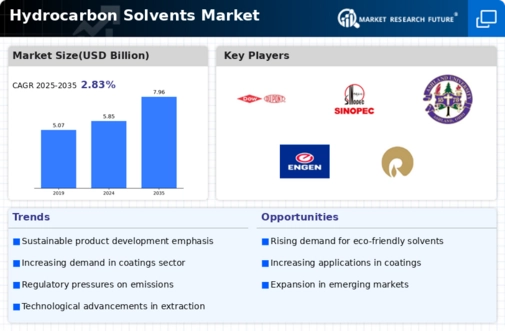
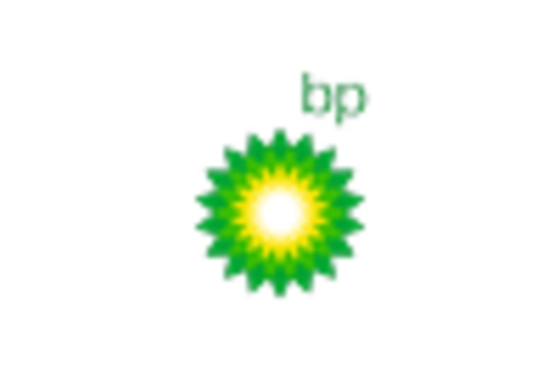
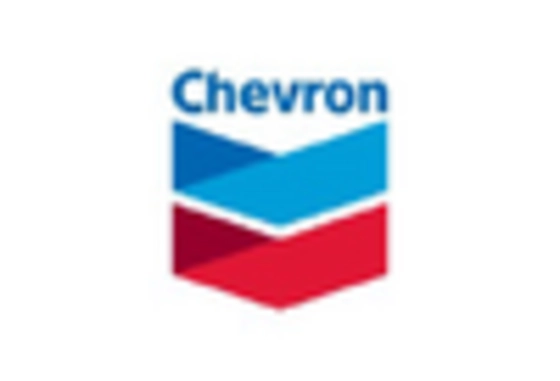
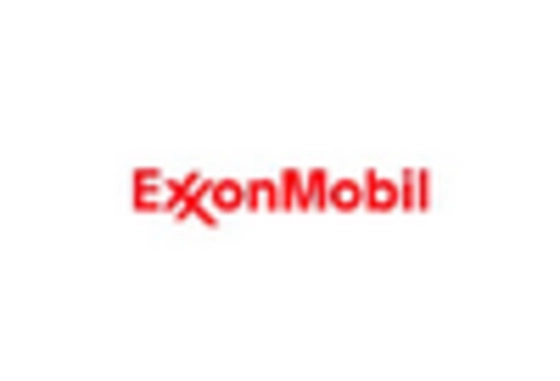
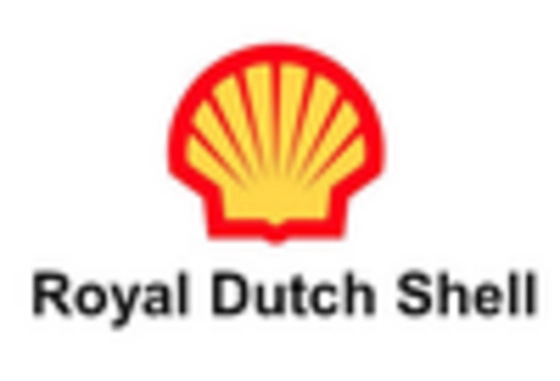

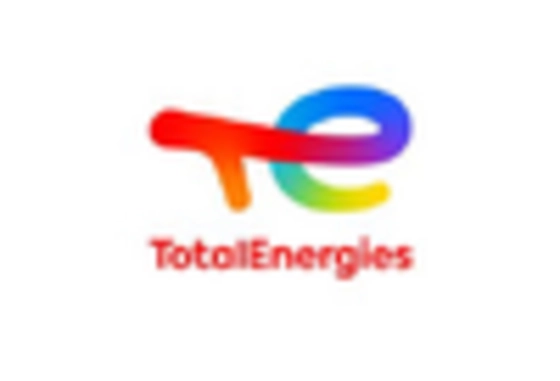

Leave a Comment